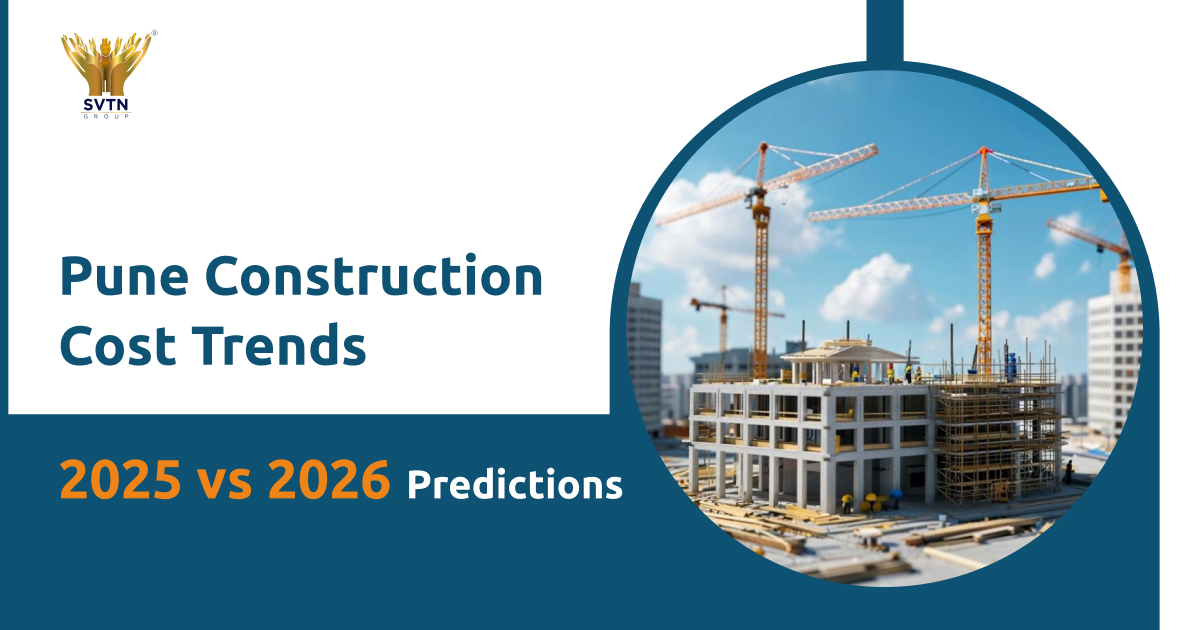In the rapidly evolving construction world, staying ahead of the curve requires a deep commitment to innovation. The SVTN Group exemplifies this by continuously integrating cutting-edge technologies into their projects, setting new industry standards, and delivering exceptional results. By embracing these advancements, SVTN Group improves efficiency and enhances the quality and sustainability of its constructions.
This blog will explore the innovative technologies transforming the construction industry and how SVTN Group leverages these tools to remain a leader in the field. We’ll delve into the top technologies shaping the future of construction, examine SVTN Group’s strategic approach to innovation, and highlight some of their most ground-breaking projects.
The Evolving Construction Technology Landscape
The construction industry is witnessing a technological revolution that is changing how projects are designed, managed, and executed. From advanced materials to sophisticated digital tools, these innovations are redefining what’s possible in construction. Companies like SVTN Group that adopt and integrate these technologies are not only enhancing their competitive edge but are also contributing to the overall progress of the industry.
This shift towards technology-driven construction is crucial in addressing the challenges of efficiency, safety, and sustainability, making it imperative for industry players to keep pace with these advancements.
Top 10 Key Innovative Technologies in Construction
Technological advancements have brought about significant changes in construction processes. Below are ten key innovations that are currently transforming the industry:
1. Building Information Modelling (BIM)
Building Information Modelling (BIM) is a digital representation of a project’s physical and functional characteristics. It allows for a collaborative approach, enabling architects, engineers, and construction professionals to work together more effectively. BIM improves accuracy in design, enhances project visualization, and reduces the risk of errors during construction.
2. Drones and Aerial Imaging
Drones are revolutionizing the way construction sites are surveyed and monitored. Equipped with high-resolution cameras, drones can capture detailed images and videos of sites, providing real-time data that helps in making informed decisions. This technology improves site safety, enhances project monitoring, and accelerates the surveying process.
3. Prefabrication and Modular Construction
Prefabrication involves manufacturing building components off-site and then assembling them on-site, while modular construction refers to building sections of a project in a factory and then assembling them on-site. Both methods significantly reduce construction time, minimize waste, and improve overall project efficiency.
4. 3D Printing
3D printing is being used to create complex construction components, reducing the need for traditional manufacturing processes. This technology allows for rapid prototyping, cost-effective production of custom components, and the ability to create intricate designs that would be difficult to achieve using conventional methods.
5. Smart Wearables
Smart wearables, such as helmets with augmented reality (AR) capabilities and smart vests with biometric sensors, are enhancing safety and efficiency on construction sites. These devices provide real-time data on workers’ health, improve communication, and can even alert workers to potential hazards.
6. Robotics
Robotics is automating repetitive and physically demanding tasks, reducing the risk of injuries, and increasing productivity. From bricklaying robots to automated machinery for excavation and demolition, robotics is streamlining construction processes and reducing labor costs.
7. Artificial Intelligence (AI)
AI is being used to optimize construction project management by predicting potential delays, optimizing resource allocation, and improving decision-making processes. Machine learning algorithms analyze data from past projects to provide insights that can be applied to current and future projects.
8. Innovative Materials
Innovative materials like self-healing concrete, nanomaterials, and high-performance insulation are improving the durability, sustainability, and energy efficiency of buildings. These materials are designed to reduce environmental impact while enhancing the longevity and performance of structures.
9. Virtual and Augmented Reality (VR/AR)
VR and AR technologies are transforming the design and visualization stages of construction projects. VR allows stakeholders to immerse themselves in a 3D model of the project, while AR overlays digital information onto the physical world, helping with tasks such as equipment placement and site planning.
10. Internet of Things (IoT)
IoT involves connecting construction equipment, tools, and workers to a network that allows for real-time data exchange. This connectivity enhances project management, improves equipment maintenance, and increases overall site safety by providing constant monitoring of critical parameters.
SVTN Group’s Approach to Innovation by Leveraging These Technologies
SVTN Group’s commitment to innovation is evident in its proactive adoption of cutting-edge construction technologies.
By integrating tools like BIM, drones, and AI into their workflows, the company not only enhances the quality of its projects but also ensures they are completed on time and within budget. The use of advanced materials and robotics further solidifies SVTN Group’s position as a leader in the industry, allowing them to tackle complex projects with unparalleled precision and efficiency.
SVTN Group’s approach is not just about using the latest technologies but also about creating a culture of continuous improvement and learning. Their teams are constantly trained on new tools and techniques, ensuring that the company remains at the forefront of the construction industry.
Case Studies: SVTN Group’s Innovative Projects
Galaxy One Star :
SVTN Group was tasked with constructing a state-of-the-art commercial complex in an urban setting. The project required precision, efficiency, and a focus on sustainability.
Technology Used: BIM was integral to the success of this project, allowing the team to visualize complex designs and identify potential issues before construction began. Drones were used for site surveying, significantly reducing the time required for this phase. The combination of these technologies resulted in a seamless construction process, completed ahead of schedule.
Nirman Cosmopolis :
SVTN Group embarked on building a residential complex using sustainable materials and innovative construction techniques. The goal was to create a modern living space that minimized environmental impact.
Technology Used: The use of advanced materials like self-healing concrete ensured the durability and longevity of the structures. Additionally, modular construction techniques were employed to reduce waste and speed up the building process. The project was a testament to SVTN Group’s ability to leverage technology for sustainable and efficient construction.
FAQs About Innovative Technologies in Construction
Q1. What role do drones play in modern construction?
Drones are used for site surveying, monitoring progress, and inspecting hard-to-reach areas. They provide real-time data, improve site safety, and help in making informed decisions throughout the construction process.
Q2. How does Building Information Modelling (BIM) benefit construction projects?
BIM enhances collaboration among stakeholders, improves design accuracy, and reduces the likelihood of errors during construction. It allows for better visualization of the project and helps in managing costs and timelines more effectively.
Q3. How do smart wearables improve safety on construction sites?
Smart wearables, like helmets with AR capabilities and vests with biometric sensors, monitor workers’ health, improve communication, and alert them to potential hazards, thereby enhancing safety on construction sites.
Q4. What are the challenges of adopting new technologies in construction?
Challenges include the initial cost of investment, the need for training and upskilling workers, and the potential resistance to change. However, these challenges are outweighed by the long-term benefits of improved efficiency, safety, and project outcomes.
Q5. What is the role of robotics in construction?
Robotics automates repetitive and dangerous tasks, reducing the risk of injuries and increasing productivity. They are used in various applications, from bricklaying to demolition, and help speed up the construction process while maintaining high standards of quality.
Conclusion
Innovative technologies are reshaping the construction industry, offering new possibilities for efficiency, safety, and sustainability. SVTN Group is at the forefront of this transformation, consistently integrating the latest advancements into their projects to deliver superior results.
Their commitment to innovation ensures that they not only meet but exceed industry standards, setting a benchmark for others to follow.
Stay Ahead in Construction with SVTN Group – Schedule a Consultation Today!
To stay ahead in the competitive construction industry, partnering with a forward-thinking company like SVTN Group is crucial. With a proven track record of leveraging the latest technologies, SVTN Group can help you achieve your construction goals with unmatched efficiency and quality. Schedule a consultation today to explore how their innovative approach can benefit your next project.




